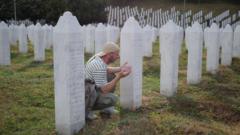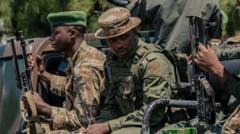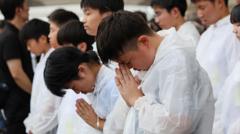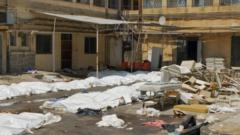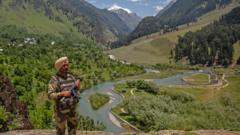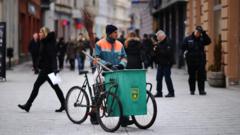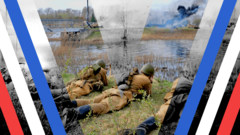In the shadow of Srebrenica's chilling history — where over 8,000 Bosnian men and boys lost their lives in July 1995 — the echoes of remembrance are mingled with currents of unrest. A visceral performance of "Flowers of Srebrenica" at Sarajevo's War Theatre encapsulates the enduring sorrow and divisions festering in Bosnia and Herzegovina.
The Srebrenica massacre is marked as the most heinous war crime in Europe post-World War Two. As Bosnian-Serb troops stormed the enclave, thousands of Bosniaks sought refuge under UN protection but instead faced horror as their families were separated and systematically murdered under the orders of General Ratko Mladić. In the aftermath, the perpetrators resorted to concealing evidence by exhuming and redistributing the remains into mass graves, leaving countless families in an agonizing search for closure.
Spectators at the play watch as characters unearth clothing and personal items, reflecting the painful reality many continue to confront after decades of unresolved grief. Yet the agonizing struggle for acknowledgment of the genocide is met with resistance, particularly in the majority-Serb Republic of Srpska, where leaders deny its occurrence despite judicial verification.
"Time was supposed to bring clarity, but it appears we are still grappling with the same lies," lamented lead actress Selma Alispahić, a former refugee who has her own stories of loss. Meanwhile, reigning tensions are aggravated by the actions of Milorad Dodik, the president of Republika Srpska, who is drawing controversy by undermining state institutions and pushing divisive narratives that intensify ethnic divides.
In light of Dodik's provocations, international peacekeepers are urged to ensure stability, as signs of remembrance contrast sharply across the country. In Sarajevo, hundreds commemorate victims with solemn vigils, while in East Sarajevo, public silence reigns in observance of the massacre. This dissonance highlights a fractured national narrative, where some parties insist on collective acknowledgment of atrocities committed by all sides.
Yet amidst tribulations, support for Srebrenica is pronounced. Memorial events witness participants like cyclists, runners, and motorcyclists rallying to honor the lives lost. Mirela Osmanović, working at the Memorial Centre, relives the trauma of family loss but fears the resurgence of ethnic tensions can jeopardize the fragile safety of those in repopulated areas.
With the past weighing heavily, the ethno-political strife continues to cloud the path toward healing. As the memory of Srebrenica persists, it becomes clear that true reconciliation will require the courage to confront truths long buried.

